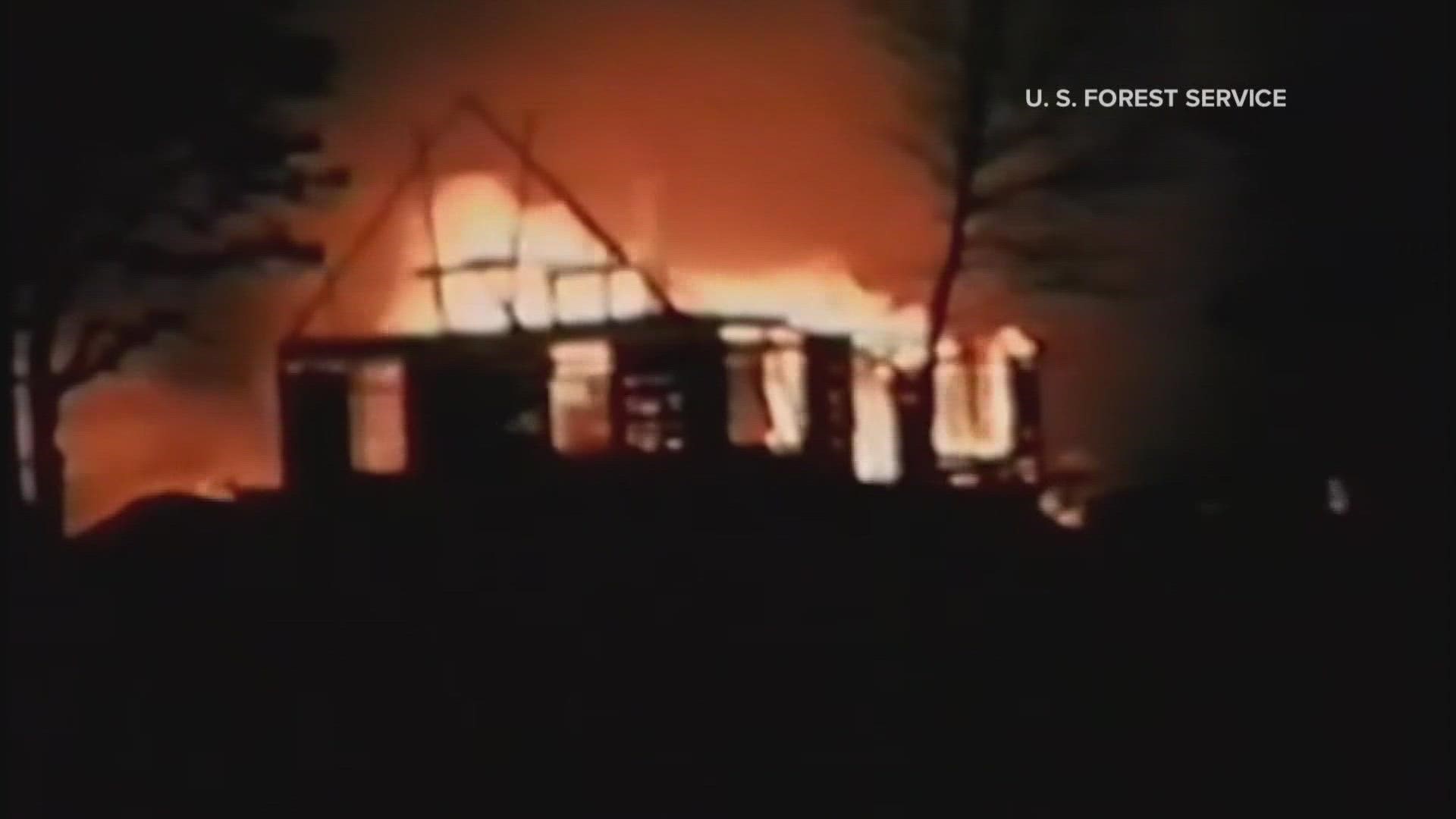BROWNFIELD, Maine — Drive down Main Street in Brownfield, and it's hard to imagine how the street got its name.
There are some houses, a church, a fire station, but little that brings to mind a village main street.
The town was different in 1947. Main Street featured old buildings, some current or former stores, and beautiful, big trees. Largely unchanged, said Lois Johnson, from the attractive view shown in a 1908 postcard.
“Very pretty town, very pretty," Johnson said.
She was 11 years old, living with her mother in their home on that street, where they also raised cows, pigs, and some chickens.
“This was a beautiful old town. They were beautiful old buildings,” Gabrielle Merrill said. She was 16 years old in 1947, living on her family’s farm.
The town they knew was largely wiped out by a forest fire on a day in late October 1947. At virtually the same time, fires also swept through parts of Kennebunk and Bar Harbor, destroying hundreds of buildings, burning hundreds of thousands of acres, and claiming 16 lives.
This October marks the 75th anniversary of the month Maine burned — the worst forest fires in the state in living memory.
The fire that leveled much of Brownfield started in neighboring Fryeburg and smoldered in the ground as well as in the woods. Those woods and even the forest floor were bone-dry that year after months with little or no rain. Despite the dry conditions, the fire moved slowly at first, taking two days and some strong winds to spread it to Brownfield.
Johnson recalled people looking off to the northwest, where the fire was burning several miles away, but seeming to not be moving very fast — until the wind took it.
“And then all hell broke loose. It came around the mountain, and you never heard any freight train make more noise,” she said, remembering that frightening day.
Families quickly began to pack what they could and get out, Johnson said.
Merrill said the family also saw what was happening to the fire.
“My brother drove the dairy cows down the road to Hiram,” she said, referring to the neighboring town several miles away.
The fire moved quickly toward their homes and the town. Merrill said her family piled furniture and other belongings onto a truck and headed away from the flames.
“They were going up Haileytown Road, and the fire started landing on the cushions and things they had loaded in the truck,” Merill said.
Forest Ranger Kent Nelson, who has studied that fire and others for the Maine Forest Service, said it was often flying embers that spread the fire, not a wall of flames sweeping forward.
“It's embers coming in, embers and firebrands, and a house ignites and gives more embers.”
The fire consumed the school, the town hall, and 200 homes. In Brownfield alone, it burned 21,000 acres, Nelson said.
Johnson, Merrill, and many others lost their homes.
The Red Cross and the military came in, providing temporary shelter while people figured out how to rebuild. Some moved to neighboring towns or farther away. Brownfield’s 1950 census showed 612 residents. More than 100 less than 1940. Those numbers continued to decline significantly until after 1970 when new people began moving in, and the population began to climb steadily.
After the fire, Brownfield was a shadow of what it once had been, according to Johnson and Merrill.
“When we come back, we come up over the hill,” Johnson said, referring to the damage, "And you couldn’t tell where we were at.”
“It did wipe out the town," Merrill said.
Brownfield slowly rebuilt. The Red Cross provided some funding to help with the building. Johnson said she and her mother lived in a metal military building, which held two families until their house could be rebuilt the following year.
Johnson still lives in that house but said Main Street looks nothing like it once did. There are only two or three old houses that escaped the fire. Everything else was built after, and there are large sections that were never rebuilt, now filled with trees and bushes that grew after the fire.
Asked how long it took for Brownfield to recover, Johnson thought for a moment, recalling what was lost.
“I don’t know as it ever did. Really. It will never be the same,” Johnson said.

